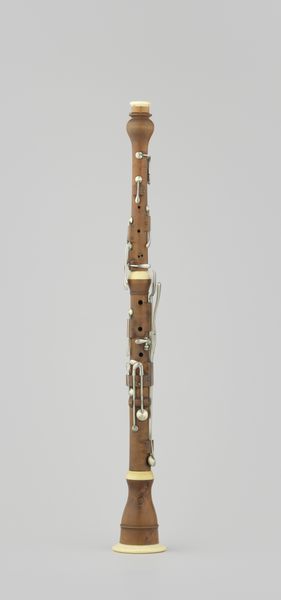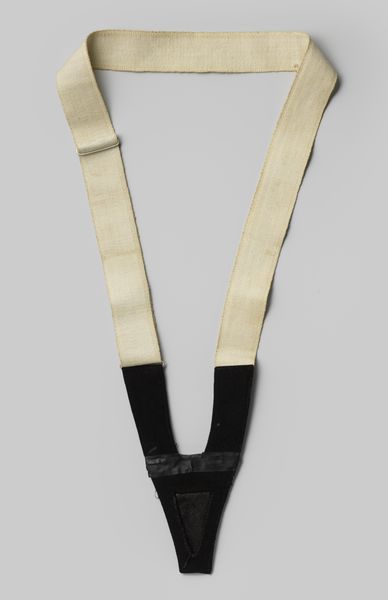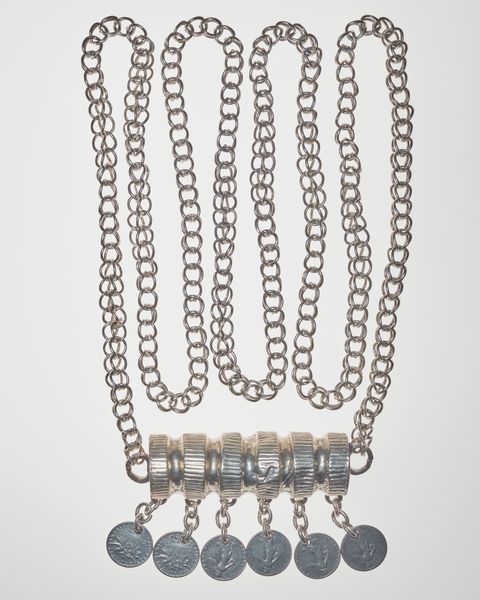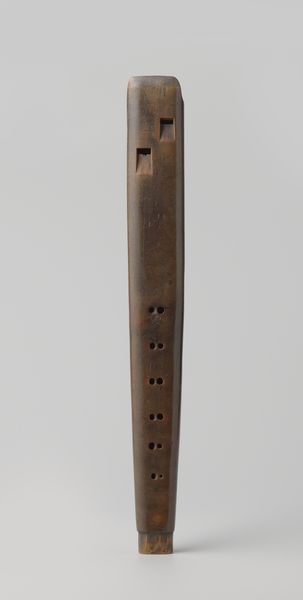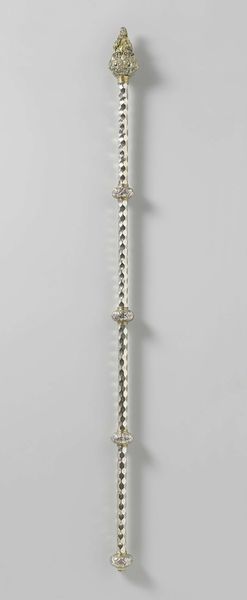
silver, metal, textile
#
silver
#
metal
#
textile
#
ceramic
#
indigenous-americas
Copyright: Public Domain
Curator: Here we have a Pouch, created around 1900 by a Navajo artist. It’s currently held in the collection of the Minneapolis Institute of Art. We see silver, metal, and fiber art coming together in this fascinating example of textile arts with some embossed detailing. Editor: The first thing I notice is its slim, elongated form and the vertical emphasis of its design. It almost seems to float; what function would something like this have served? Curator: It's difficult to say with certainty exactly what it held, but pouches such as this were very useful, especially in light of historical changes impacting Navajo people at this time. There was economic adaptation during the reservation period to meet needs of the tourist trade in the United States. They would often adapt traditional forms and imagery. Editor: So this blending of Native artistry with... a certain appeal to outsiders. Is that reflected in the imagery itself? Curator: That's definitely a possibility. The central design, a stylized tree or plant, appears to be carefully crafted. Silver adornments trace the edges and dangle decoratively at the base with small details that draw attention to the fine artistry involved. The use of silver in the decoration speaks to available materials and artistic choices prevalent within Diné communities during that period. Editor: The embellishments certainly elevate it from simple utility, transforming it into something that blends aesthetic expression with functionality. But it almost feels like there's a tension in there; something personal re-purposed to a broader audience and new value. Curator: Absolutely. This tension is what makes objects like this Pouch such important artifacts for understanding the intersections of cultural heritage, commodification, and identity. These kinds of changes certainly impacted Indigenous people as reservations grew more common. These sorts of artistic gestures represent a certain resilience. Editor: Looking at this Pouch, it brings into focus the stories we choose to tell and how intertwined art is with shifts in history. Curator: Precisely. It speaks to the intricate layers of the Diné experience at the turn of the century, of history, adaptation and the human spirit imbuing cultural creation with something unique.
Comments
minneapolisinstituteofart about 2 years ago
⋮
Instead of incorporating pockets into their clothing, Diné (Navajo) men carried a leather pouch with a long strap that hung across the chest. Most pouches were decorated with buttons that were secured along the entire length of the strap and the perimeter of the bag. Some have a cast ornament attached to the center, as in this example. These bags are often called medicine pouches because medicine people would sometimes use them to store and transport ceremonial items.
Join the conversation
Join millions of artists and users on Artera today and experience the ultimate creative platform.


